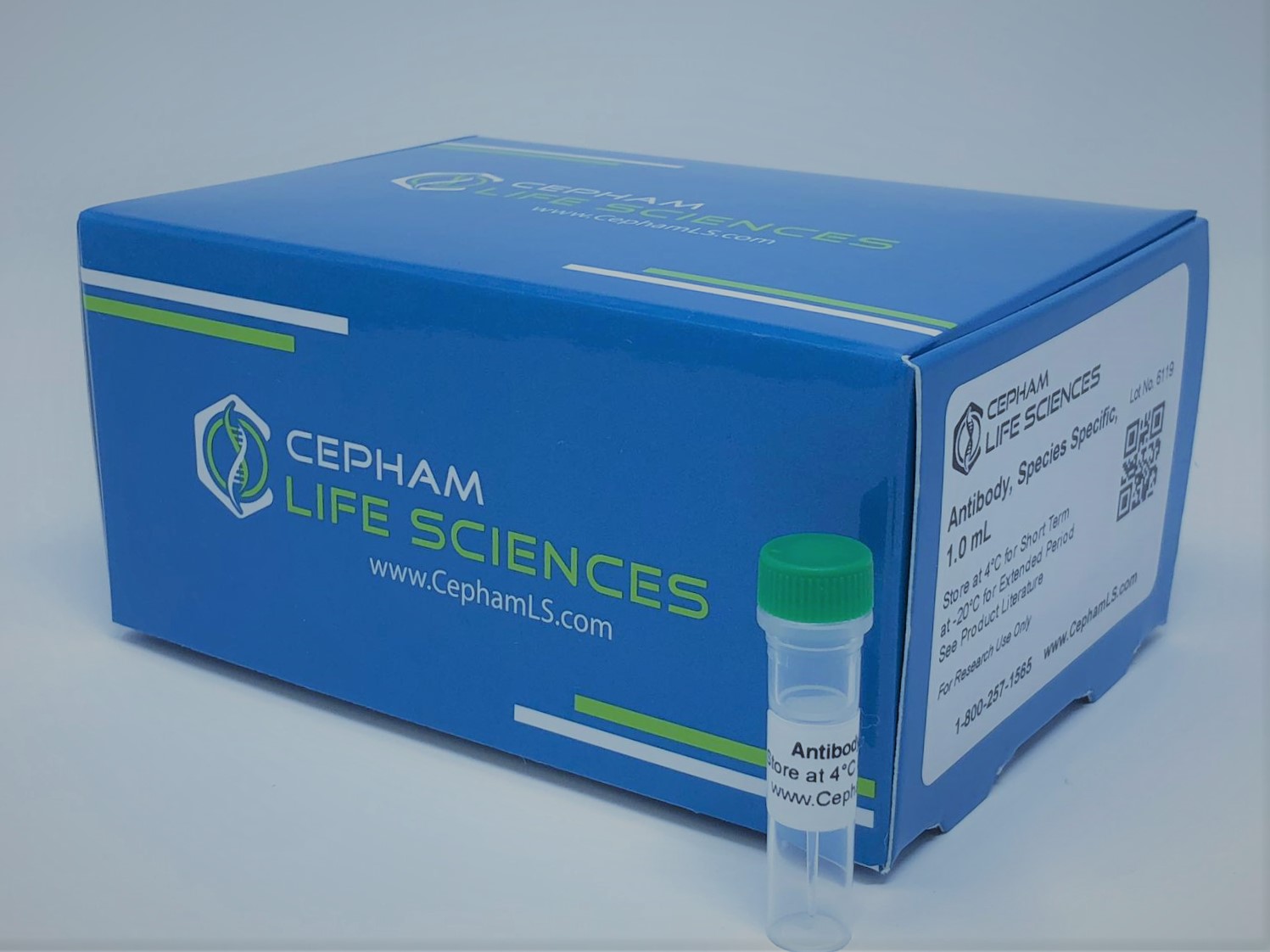Description
Aliases
hRNF8, RING finger protein 8, RNF8, KIAA0646
Antibody Type
Polyclonal Antibody
Species
Human
Uniprot ID
O76064
Immunogen
Recombinant human E3 ubiquitin-protein ligase RNF8 protein (1-260AA)
Raised In
Rabbit
Species Reactivity
Human
Tested Applications
ELISA, WB, IHC ;Recommended dilution:WB:1:500-5000, IHC:1:20-1:200
Background / Function
E3 ubiquitin-protein ligase that plays a key role in DNA damage signaling via 2 distinct roles: by mediating the ‘Lys-63’-linked ubiquitination of histones H2A and H2AX and promoting the recruitment of DNA repair proteins at double-strand breaks (DSBs) sites, and by catalyzing ‘Lys-48’-linked ubiquitination to remove target proteins from DNA damage sites. Following DNA DSBs, it is recruited to the sites of damage by ATM-phosphorylated MDC1 and catalyzes the ‘Lys-63’-linked ubiquitination of histones H2A and H2AX, thereby promoting the formation of TP53BP1 and BRCA1 ionizing radiation-induced foci (IRIF). Also controls the recruitment of UIMC1-BRCC3 (RAP80-BRCC36) and PAXIP1/PTIP to DNA damage sites. Also recruited at DNA interstrand cross-links (ICLs) sites and catalyzes ‘Lys-63’-linked ubiquitination of histones H2A and H2AX, leading to recruitment of FAAP20/C1orf86 and Fanconi anemia (FA) complex, followed by interstrand cross-link repair. H2A ubiquitination also mediates the ATM-dependent transcriptional silencing at regions flanking DSBs in cis, a mechanism to avoid collision between transcription and repair intermediates. Promotes the formation of ‘Lys-63’-linked polyubiquitin chains via interactions with the specific ubiquitin-conjugating UBE2N/UBC13 and ubiquitinates non-histone substrates such as PCNA. Substrates that are polyubiquitinated at ‘Lys-63’ are usually not targeted for degradation. Also catalyzes the formation of ‘Lys-48’-linked polyubiquitin chains via interaction with the ubiquitin-conjugating UBE2L6/UBCH8, leading to degradation of substrate proteins such as CHEK2, JMJD2A/KDM4A and KU80/XRCC5: it is still unclear how the preference toward ‘Lys-48’- versus ‘Lys-63’-linked ubiquitination is regulated but it could be due to RNF8 ability to interact with specific E2 specific ligases. For instance, interaction with phosphorylated HERC2 promotes the association between RNF8 and UBE2N/UBC13 and favors the specific formation of ‘Lys-63’-linked ubiquitin chains. Promotes non-homologous end joining (NHEJ) by promoting the ‘Lys-48’-linked ubiquitination and degradation the of KU80/XRCC5. Following DNA damage, mediates the ubiquitination and degradation of JMJD2A/KDM4A in collaboration with RNF168, leading to unmask H4K20me2 mark and promote the recruitment of TP53BP1 at DNA damage sites. In addition to its function in damage signaling, also plays a role in higher-order chromatin structure by mediating extensive chromatin decondensation. Involved in the activation of ATM by promoting histone H2B ubiquitination, which indirectly triggers histone H4 ‘Lys-16’ acetylation (H4K16ac), establishing a chromatin environment that promotes efficient activation of ATM kinase. Required in the testis, where it plays a role in the replacement of histones during spermatogenesis. At uncapped telomeres, promotes the joining of deprotected chromosome ends by inducing H2A ubiquitination and TP53BP1 recruitment, suggesting that it may enhance cancer development by aggravating telomere-induced genome instability in case of telomeric crisis. Promotes the assembly of RAD51 at DNA DSBs in the absence of BRCA1 and TP53BP1 Also involved in class switch recombination in immune system, via its role in regulation of DSBs repair. May be required for proper exit from mitosis after spindle checkpoint activation and may regulate cytokinesis. May play a role in the regulation of RXRA-mediated transcriptional activity. Not involved in RXRA ubiquitination by UBE2E2.
Isotype
IgG
Conjugate
Unconjugated
Storage Buffer
PBS with 0.02% sodium azide, 50% glycerol, pH7.3.
Form
Liquid
Storage
Shipped at 4°C. Upon delivery aliquot and store at -20°C or -80°C. Avoid repeated freeze.
Purity
Antigen Affinity Purified
Literature
[1]Molecular insights into the function of RING Finger (RNF)-containing proteins hRNF8 and hRNF168 in Ubc13/Mms2-dependent ubiquitylation.”Campbell S.J., Edwards R.A., Leung C.C., Neculai D., Hodge C.D., Dhe-Paganon S., Glover J.N.J. Biol. Chem. 287:23900-23910(2012). [2]RNF168 ubiquitinates K13-15 on H2A/H2AX to drive DNA Damage signaling.”Mattiroli F., Vissers J.H., van Dijk W.J., Ikpa P., Citterio E., Vermeulen W., Marteijn J.A., Sixma T.K.Cell 150:1182-1195(2012). [3]RNF8 transduces the DNA-damage signal via histone ubiquitylation and checkpoint protein assembly.” Huen M.S.Y., Grant R., Manke I., Minn K., Yu X., Yaffe M.B., Chen J.Cell 131:901-914(2007).Additional information
| Size | 50μl, 100μl |
|---|


